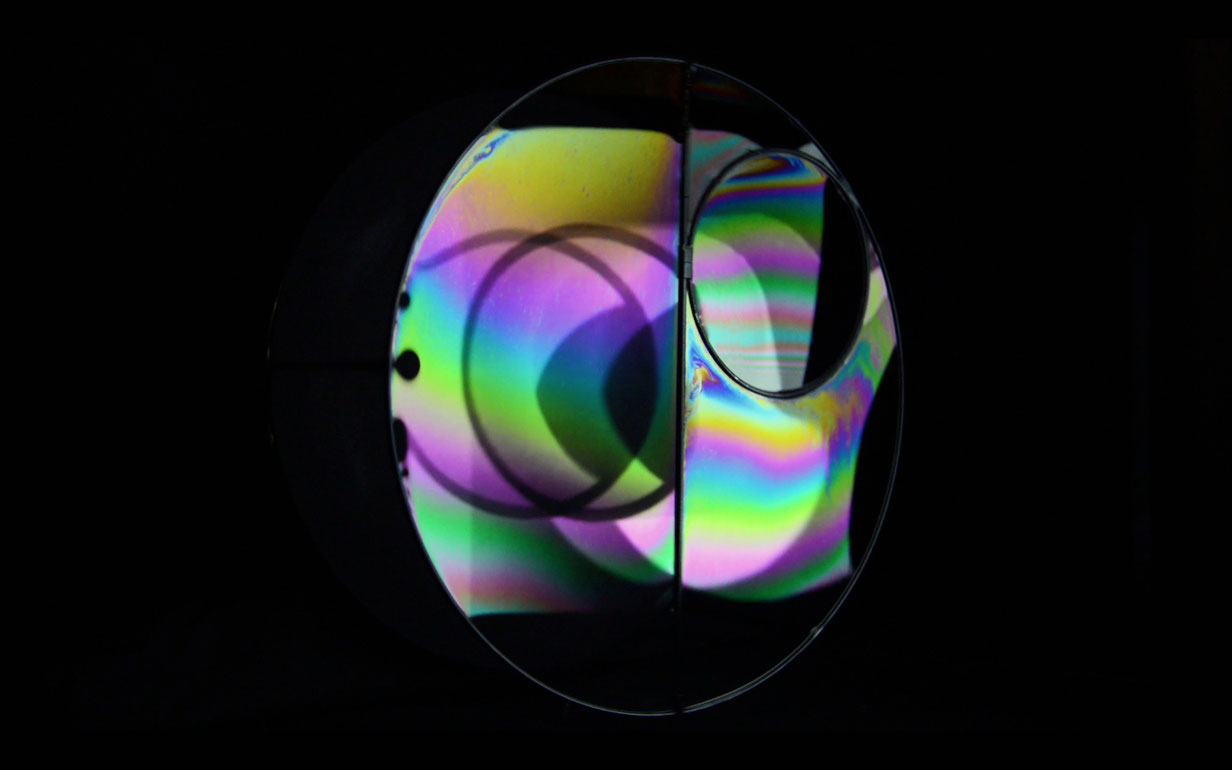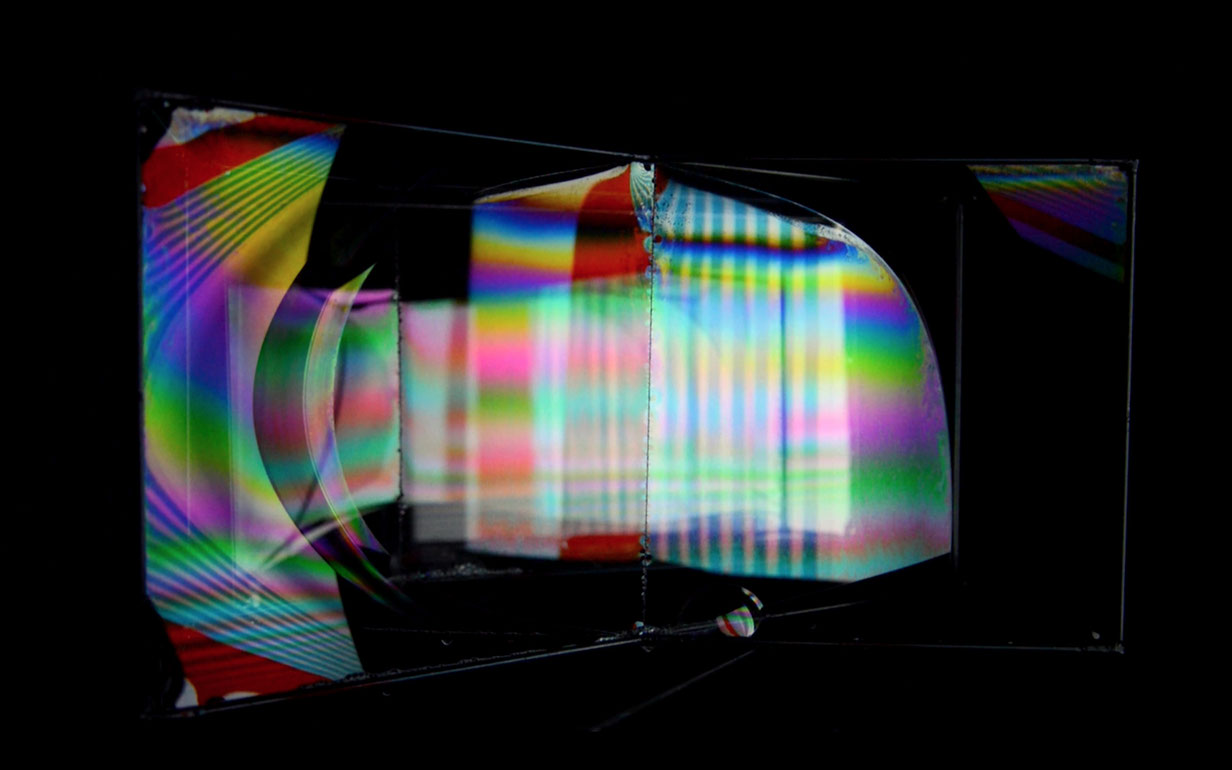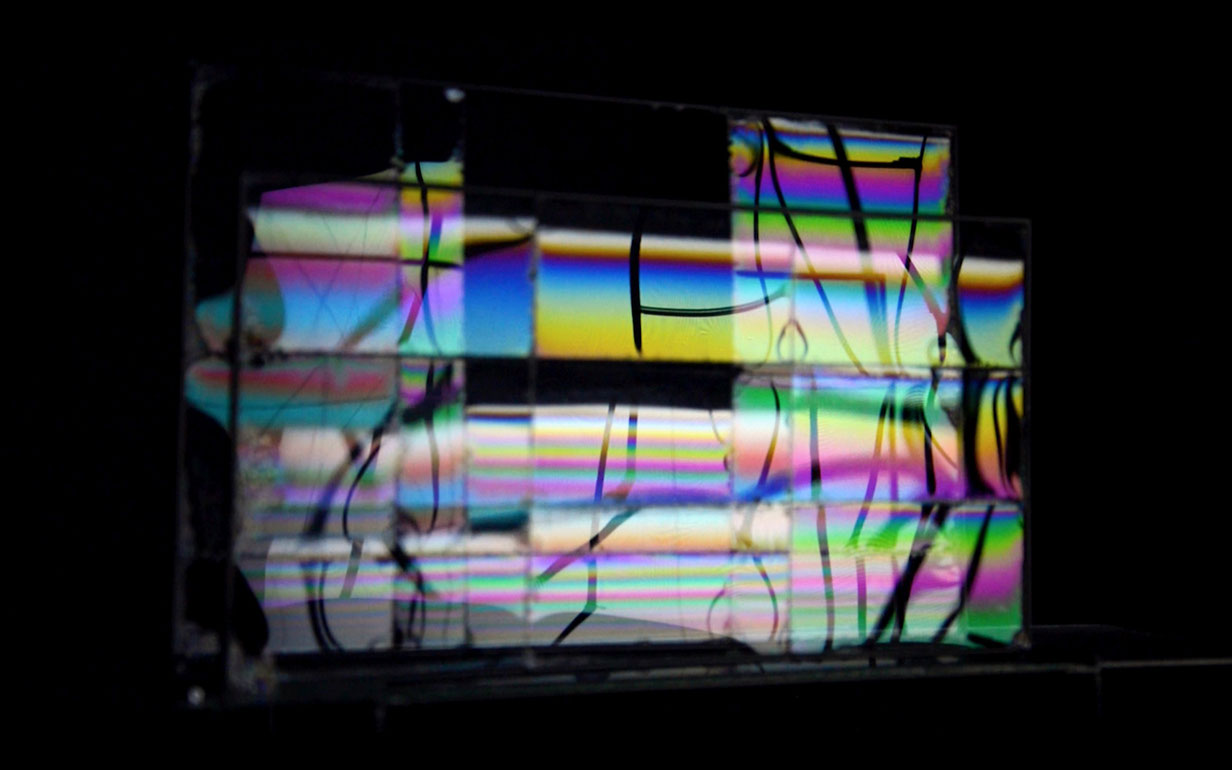Thinner than two ten-thousandths of a millimetre
Marcel Duchamp once described the relationship between the possible and what is actually occurring as "inframince", or razor-thin. The dimension of Gregor Eldarb's experimental arrangement is equally minimal, namely "thinner than two ten-thousandths of a millimetre" – as indicated by the title of his film. Soap suds, various framing devices and reflections off a computer screen constitute the raw material from which a highly fragile cosmos of the "infra-thin" unfolds, one step at a time. Whereby the process of the image being generated is perpetually in flux and quickly passé as it unfolds across the entire suspended apparatus. Electronic images on the monitor are not directly viewed: The scenes involving brief experiments and filmic manipulations are instead seen in the form of reflections on an oily layer of soap. Whether the imagistic rasterization is composed of individual, combined, or artfully spatial layers, it follows a geometry and temporality separate from the perceiving subject. The machine itself is independent of an observer as it creates sense-data. The musical pulse derives in part from the sound of water droplets temporarily flowing into compressed torrents and it intensifies the non-anthropomorphic character of the visible. The resulting fragility is not steered by an individual, it is removed from all subjectivity and proceeds even further: Projection monitors are suspended by wires, partly themselves in motion, ever on the brink of bursting and congenially presenting the perpetual threshold between briefly glimpsed virtual imagery and the once again no longer actually seen. Instability meets with a higher order of the ephemeral. Black and white original imagery radiates the most vibrant rainbow colors. The infra-thin world of sudden possibility flares up for brief luminous moments. (Christian Höller)
Translation: Eve Heller
Dünner als zwei Zehntausendstel eines Millimeters
2020
Austria
8 min



